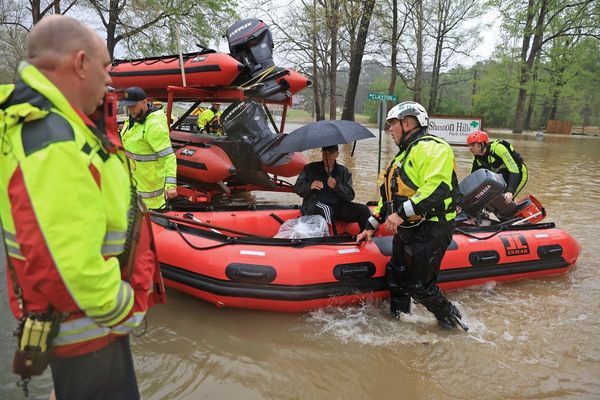Cattle grazing in a national park are found wading through a waterway. David Williams reports.
It’s a perfect way to see out the year, you’d think – heading to the country’s biggest national park, part of Te Wāhipounamu/South West New Zealand World Heritage Area.
But environmental activist Matt Coffey wasn’t soaking up Fiordland National Park’s stunning lakes or celebrated fiords, he wanted footage of cattle.
“These cows are in the national park,” he told Newsroom in a message from the park on New Year’s Eve, pinning his location on a Department of Conservation map.
After he emerged, he outlined his concerns: “Why have we still got cattle in waterways?
READ MORE: * ‘Negligent’ DoC lets cattle in national park * ‘We’re being watched’: Behind DoC’s cancellation of a grazing licence
“It’s not a wee stream, it’s a river, and there’s still cattle in there, in the Fiordland National Park, on an unfenced waterway.”
That seemed curious.
In 2021, we wrote about a years-long saga to exclude Te Anau Downs Station’s cattle from the park, which culminated in a 14.5km-long fence being built, costing taxpayers $361,639.
Station owner Peter Chartres had until March last year to remove them.
Just before Christmas, we asked DoC for an update.
Te Anau operations manager John Lucas had other commitments and couldn’t provide substantive answers, but gave a yes/no:
Have more costs been incurred? “No.”
Has the fence been successful at preventing cattle from entering the national park? “Yes.”
Has the department made any further concessions/agreements to Chartres, or his companies? “No.”
Coffey retorts: “Yes, the fence has been built and it’s protecting the Eglinton River but not the tributary, which is quite a large tributary.”
When DoC says cattle are prevented from entering the national park “it’s not true”, he says.
We went back to Lucas at the start of this month, wondering how Coffey’s footage gelled with his answers – especially that the fence was keeping cattle out of the park.
The answer, emailed a week later, described a fencing agreement signed by DoC, Chartres and his company CP Trustees Ltd, in March 2019.
“This agreement – known as a ‘give and take’ fencing agreement – means where it is not practical, (or by agreement), the fence may not follow the surveyed boundary.
“The section of national park Mr Coffey refers to is on Mr Chartres' side of this ‘give and take’ boundary fence. The management agreement that covers land-use of this area states Mr Chartres can graze this area.”
Cattle were removed from the national park in early 2022, Lucas said. “No cattle have been observed in the national park protected by the fence since then.”
Of course, it could be argued the section of national park subject to the grazing agreement isn’t “protected by the fence”.
We put to Lucas these cattle are still wading in a waterway within a national park. Is that acceptable, and, if not, what is being done about it?
On Thursday, more than a week after we asked, Lucas said in a statement: “While excluding stock from all waterways is the preference, it is not always practical or possible to do so.”
The area on Chartres’ side of the give and take agreement is about 25ha, is predominantly in pasture, with Dunton Creek running through it. “The management agreement that covers land-use of this area states Mr Chartres can graze/crop this area.”
Lucas notes an area of wetland within Chartres’ farm has been fenced and protected as part of the agreement.
Chartres didn’t return our emails.
“The ‘give and take’ fencing agreement with farmer Mr Chartres seems like all give by DoC – at taxpayers’ expense – and all take by the farmer.” – Christine Rose
Chris Dillon, Federated Farmers’ Southland president, said the agreement for the boundary fence between DoC and Chartres allowed grazing.
The national park is almost 10 percent of the South Island, he says. (By our calculations, about 8 percent.)
“It’s a very large area, those cattle have obviously got access to a very, very small part of it.”
But don’t we need rules to protect our special places like national parks?
According to the Fiordland National Park management plan, the Eglinton Valley is known to contain mōhua (yellowhead), kākā, and the river is known habitat for blue duck (kōwhiowhio), black-fronted terns (tara) and other indigenous wildlife.
Dillon, who farms near Balfour, about 90 minutes’ drive south of Queenstown, says cattle need to be fenced out of waterways under farm environment plans.
“That’s the way it is. In most cases that’s happened – obviously hasn’t happened there yet.”
Not yet – almost three years after the grazing agreement was signed, and almost a year since cattle were removed from other parts of the park, protected by an expensive fence built with public money.
Our last story detailed Te Anau Downs Station’s run-ins with regulators – Southland District Council, which took Environment Court action, and Environment Southland.
Christine Rose, of Greenpeace, says via email the planet’s in a climate and biodiversity crisis.
“DoC’s concessions to farmers who have a history of transgressions in precious conservation lands is an affront to the pressing issues of our time.
“The ‘give and take’ fencing agreement with farmer Mr Chartres seems like all give by DoC – at taxpayers’ expense – and all take by the farmer.
“This undermines confidence in DoC’s willingness and ability to honour its own conservation management plans, and its obligations to preserve the precious taonga and integrity of Fiordland National Park.”
Coffey, who lives in Queenstown, reckons there might be galaxiids, longfinned eels and other indigenous fish in the waterway being accessed by cattle. And possibly, if the river was healthy, there might be blue ducks.
What it comes down to for Coffey is there should be greater protection in national parks.
DoC’s general policy for national parks says: “Because of their size and diversity, national parks will always be key places where much of New Zealand’s land and freshwater biodiversity is maintained.”
Says Coffey: “That stream needs protecting.”
* This story has been updated with further comment from John Lucas.







